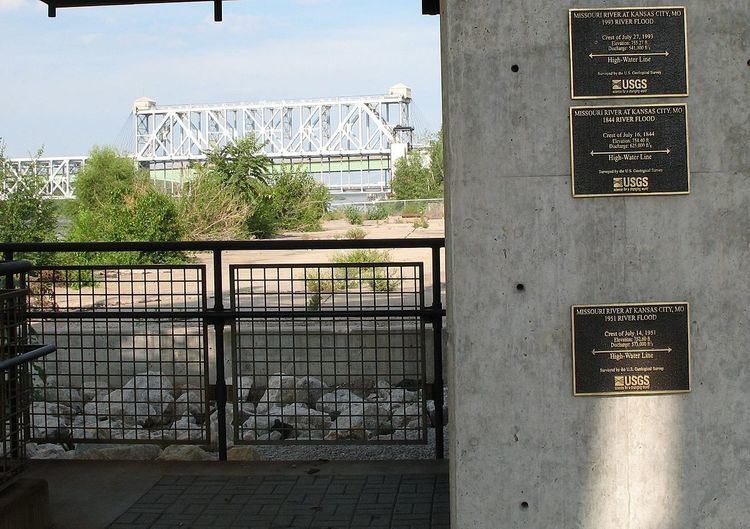 | ||
Similar Great Flood of 1951, Great Flood of 1993, Great Mississippi Flood of 1 | ||
The Great Flood of 1844 is the biggest flood ever recorded on the Missouri River and Upper Mississippi River, in North America, in terms of discharge.
The adjusted economic impact was not as great as subsequent floods because of the small population in the region at the time. The flood devastation was particularly widespread since the region had few or no levees at the time, so the waters were able to spread far from the normal banks.
Among the hardest hit in terms of mortality were the Wyandot Indians, who lost 100 people in the diseases that occurred after the flood in the vicinity of today's Kansas City, Kansas—the Wyandot were a people formed from the war and disease depopulated elements of the once mighty Huron Confederacy and the Petun Indian tribes who had migrated south and west.
The flood also placed a major obstacle, a sandbar in front of the Wayne City Landing at Independence, Missouri which was to cause and encourage settlers to go further east to Westport Landing in Kansas City causing significant local economic and cultural impact. Independence had been the jumping off place for several key emigrant trails, prior to 1846 notably both the Santa Fe Trail and one alternative eastern starting branch of the Oregon Trail. After the Mexican–American War settlement of 1846, the Oregon's start quickly also became a start of the California Trail and an alternative beginning also for the Mormon Trail (Church of Jesus Christ of Latter Day Saints migration to Utah).
Congress in 1849 passed the Swamp Act providing land grants to build stronger levees.
The flood also is the highest recorded for the Mississippi River at St. Louis (1,300,000 cubic feet second in 1844 vs. 782,000 in 1951 and 1,030,000 in 1993).
The 1844 flood was the backdrop to the death of Mormon leaders, brothers Joseph and Hyrum Smith, at the hands of a mob numbering over a hundred men in Carthage, Illinois. Carthage is located a bit over ten miles from the Mississippi river and the northern border of Missouri.
Comparison to other big floods
Channeling and levee construction have altered how the floods have hit various areas along the Missouri River. Here's a comparison of the four big floods since the early 19th century.
